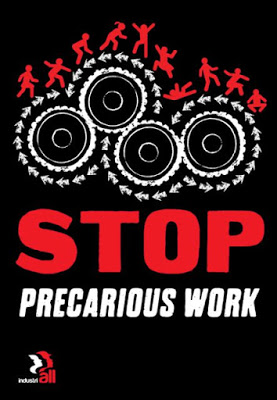 Ned K.
Ned K.VANGUARD - Expressing the viewpoint of the Communist Party of Australia (Marxist-Leninist)
For National Independence and Socialism • www.cpaml.org
The Reserve Bank has recently released its analysis on employment trends in Australia.
It claims that in 2016 the official unemployment rate declined slightly to 5.6%, and that all of the increase in jobs was part-time, meaning less than 38 hours a week. Since 2013 67% of new jobs were part time.
The report says that in the 1960s when manufacturing in Australia was at or near its peak, part-time employment comprised about 10% of total employment. In 2016 part-time employment is about 30%.
It is unclear from the report whether part-time employment includes sub-contractors or workers on ABNs. So the figure may be even higher than 30%. Similarly it does not say if part-time employment includes casuals working less than full-time hours. The latter is common with workers employed by labour hire companies who often work unpredictable hours which may be full-time equivalent hours one week and very few the next.
Even more alarming for the thousands of workers to be made redundant from full-time jobs in the car and car component industry over the next 18 months is that the underemployment figure for 2016 has increased from 7% in 2010 to 9% in 2016. Underemployment is measured by those workers who declare that they are looking to work more hours per day or week in order to feed their families, pay the bills and keep a roof over their heads.
The Reserve Bank report says that the rate of growth of part-time work is in what it calls "households services", a broad category including food, retail, healthcare, accommodation, education and recreation. In this category, part-time work is averaging 45% of total employment. It is not surprising that with the decline of full-time work and rising real unemployment of 14.6% (5.6% + 9%) that workers in the "household services" sectors are prioritizing job security and security of hours of work ahead of higher wage increases in enterprise bargaining struggles with their immediate employers. Even full-time workers in production and distribution sectors are doing the same as employers use labour hire workers more and more.
The whole situation has led to a decline in the average enterprise agreement wage outcomes for all industries from between 3.5% to 4% to the range of 2.5% to 3%. This is a transfer of wealth from workers to employers in the form of profits.
Employers argue that they need "flexible work forces" and need to "contain costs and be competitive" when defending the increase in part-time jobs and the reluctance to agree to conversion clauses in Agreements which include the right of a part-time worker to become full-time when vacant shifts arise.
If the employers want "flexibility" and no longer require workers to work 38 hours a week, the time is ripe for a shorter working week of 32 hours a week on full pay.
This would increase the number of full time jobs and lift the hourly rate of part-time workers